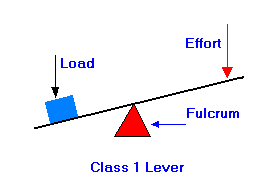
Archimedes famously claimed that, given a lever, he could move the whole world. Why so confident, Archimedes? Levers take advantage of a rotational force called torque. You use this force to make your life easier every time you open a door, paddle a boat, turn a wrench, hit a baseball… the list is endless! Here’s the common thread connecting these mechanisms: if you want to turn something, it helps to apply force as far as possible from the axis of rotation.
 Most people know this intuitively (or at least through a lifetime of practice). Where do you grip a wrench as you’re tightening a nut? Probably near the end! Try opening a door by pushing right next to the hinges, and it becomes clear why the doorknob is usually all the way on the opposite edge.
Most people know this intuitively (or at least through a lifetime of practice). Where do you grip a wrench as you’re tightening a nut? Probably near the end! Try opening a door by pushing right next to the hinges, and it becomes clear why the doorknob is usually all the way on the opposite edge.
A seesaw — or lever — is just an extension of the same idea. One way to make a heavy load manageable is to put it on the other side of a center of rotation, or fulcrum. Then, the farther away the pusher moves, the easier their job becomes. In other words, it’s much easier to move a seesaw by pushing at one end than near the middle. (Lever diagram courtesy of Ohio University.)
So, using a long handle is one way to make rotating (or lifting) an object easier. Of course, it also helps to increase the pushing force, or to make the target load lighter– mass makes a difference, too!

The candle seesaw shows the effects of changing the mass at each end of a balanced, rotating system. As the lower candle burns, wax drips off, and the candle becomes lighter. The top candle melts, too, but its wax runs down its sides and quickly cools, so the overall mass of that candle doesn’t change. When the bottom end is light enough, the top end swings down, it begins to lose wax itself, and the process repeats.
Written By: Caela Barry

